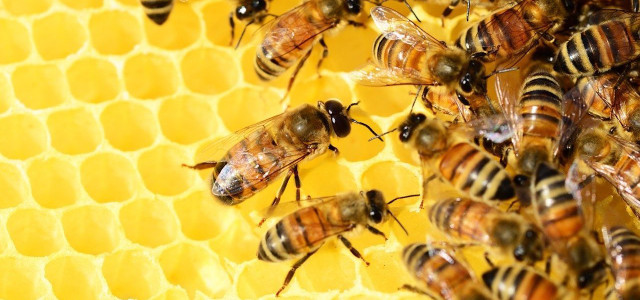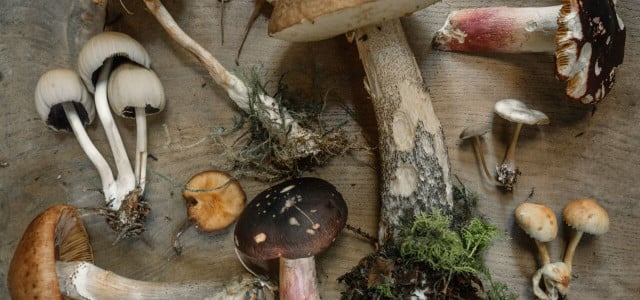This comprehensive guide to natural pest control includes effective recipes and explains the benefits and types of natural pesticides for an eco-friendly garden.
Pests can wreak havoc on our gardens, landscapes and agricultural crops, often leading to significant losses and damage. In an effort to control these pests, many people turn to synthetic chemical pesticides, which can be harmful to the environment and human health. However, there is a growing movement towards eco-friendly alternatives, with natural pesticides emerging as a popular and effective solution.
This article will delve into the world of natural pesticides, discussing their benefits, how they work and the types available. By understanding the role natural and organic pesticides play in sustainable agriculture and pest control, we can better appreciate their importance and make more informed decisions about our own pest management practices.
So, let’s look at how natural pest control can help you protect your plants without harming the planet or your health.
The Growing Need for Eco-friendly Pest Control
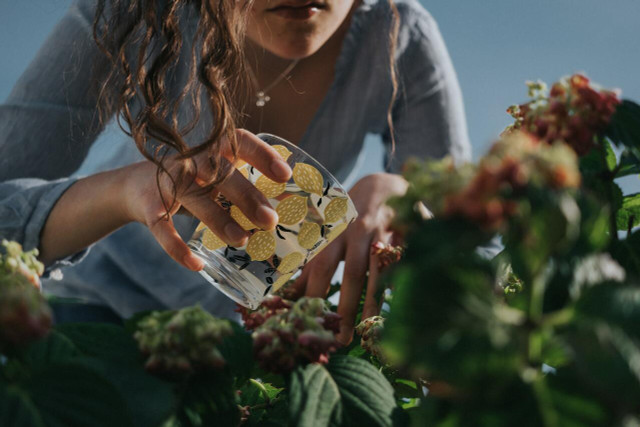
(Foto: (Photo: CC0 Public Domain/pexels/matteo badini))
The rising awareness of the dangers posed by synthetic pesticides highlights the importance of natural pesticides in promoting eco-friendly pest control and sustainable agriculture.
Environmental and Health Concerns Related to Synthetic Pesticides
The widespread use of synthetic pesticides has raised significant concerns for both the environment and human health. These chemicals often persist in the soil, water and air, leading to pollution and the contamination of valuable ecosystems. Additionally, many synthetic pesticides threaten biodiversity, particularly affecting pollinators such as bees and butterflies.
From a human health perspective, exposure to chemical pesticides has been associated with various health issues, including hormone disruption, neurological disorders and even cancer. As a result, there is an urgent need to find alternatives that are safer for people and the planet.
The Role of Natural Pesticides in Sustainable Agriculture
In response to these concerns, sustainable agriculture practices have gained momentum, with natural pesticides playing a key role in this movement. These eco-friendly solutions are derived from natural sources and are generally considered less harmful than their synthetic counterparts.
Natural pesticides can be used as part of integrated pest management strategies, working in harmony with other environmentally friendly practices such as crop rotation, companion planting and the use of beneficial insects. By adopting natural insecticides, farmers and gardeners can minimize their reliance on synthetic chemicals, promoting long-term soil health and supporting biodiversity.
Understanding Natural Pesticides
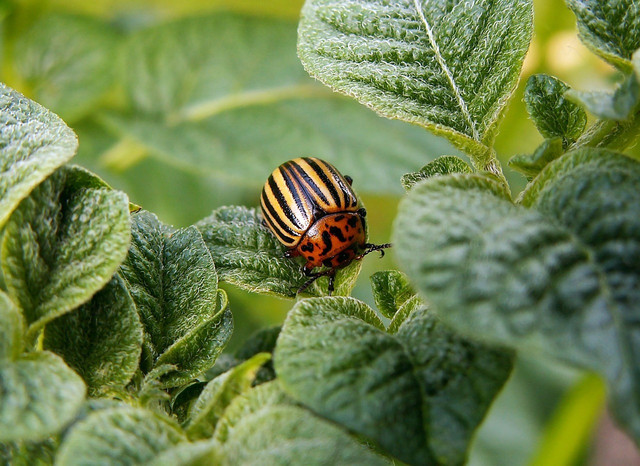


(Foto: CC0 / Pixabay / zdenet)
To harness the full potential of natural pesticides, it’s essential to understand their origins, categories and how they function in targeting and controlling pests.
Definition and Explanation of Natural Pesticides
Natural pesticides, also known as biopesticides, are pest control substances derived from natural sources such as plants, animals, minerals or microorganisms. These eco-friendly solutions aim to manage pests with minimal environmental impact and lower risks to human health compared to synthetic pesticides. Natural pesticides often have a specific target or mode of action, making them less likely to cause widespread harm to non-target species and ecosystems.
Categories of Organic Pesticides:
- Biological agents: These include living organisms or their natural byproducts that target specific pests. Examples are predatory insects, parasitic wasps and bacteria like Bacillus thuringiensis (Bt) that target specific pests while leaving other organisms unharmed.
- Plant-derived substances: Many plants produce natural chemicals that repel or kill pests. These substances can be extracted and used as natural pest control. Examples include pyrethrum from chrysanthemum flowers, neem oil from the neem tree and essential oils from various plants.
- Mineral-based compounds: Some naturally occurring minerals have pesticidal properties that can help control pests. Examples are diatomaceous earth, which damages the exoskeletons of insects, and kaolin clay, which acts as a physical barrier to deter pests. Read How to Use Diatomaceous Earth For Your Plants to learn more.
How Organic Pesticides Work
The mode of action of natural pesticides varies depending on their composition and the targeted pests. Some natural pesticides work by disrupting the pest’s growth, reproduction or feeding habits, while others may have a direct toxic effect on the pest. Additionally, certain natural pesticides function as repellents, making the environment less attractive to pests.
Understanding how natural pesticides work can help users select the most effective option for their specific pest control needs and ensure proper application to maximize results.
Popular Natural Pesticides and Their Applications



(Foto: (Photo: CC0 Public Domain/pexels/sasha kim))
This comprehensive list of organic pesticides and insecticides will give you an idea of the broad range of nontoxic possibilities for natural pest control. For instructions on how to make and use the most popular natural pesticides, scroll to the next section!
- Neem oil: Extracted from the seeds of the neem tree, neem oil is a versatile natural pesticide that works as an insecticide, fungicide and miticide. It is effective against a wide range of pests, including aphids, whiteflies and spider mites. You can also use neem oil for skin.
- Diatomaceous earth: A naturally occurring sedimentary rock, diatomaceous earth is composed of fossilized remains of diatoms, a type of algae. When applied to plants, it damages the exoskeletons of insects, causing them to dehydrate and die. It is effective against pests like ants, slugs and beetles.
- Bacillus thuringiensis (Bt): A naturally occurring soil bacterium, Bt produces proteins that are toxic to specific insects, such as caterpillars and mosquito larvae, while remaining harmless to humans, pets and beneficial insects.
- Pyrethrum: Derived from chrysanthemum flowers, pyrethrum is a potent natural insecticide that affects the nervous systems of insects. It is effective against a variety of pests, including aphids, thrips and mosquitoes.
- Garlic and hot pepper spray: A homemade spray made from garlic and hot peppers can act as a natural insect repellent, deterring pests like aphids, spider mites and whiteflies.
- Spinosad: A natural substance produced by the soil bacterium Saccharopolyspora spinosa, spinosad is effective against a range of pests, including caterpillars, leafminers and thrips. It works by targeting the insects’ nervous systems, causing paralysis and death.
- Horticultural oils: These oils, derived from either mineral sources or plant-based sources like soybean and neem, can smother and kill pests by disrupting their respiratory systems. They are effective against pests such as scale insects, mites and aphids.
- Insecticidal soaps: Made from potassium salts of fatty acids, insecticidal soaps work by dissolving the outer cuticle of insects, leading to dehydration and death. They are effective against soft-bodied pests like aphids, mealybugs and whiteflies.
- Nematodes: Beneficial nematodes like Steinernema and Heterorhabditis species are microscopic roundworms that target and kill pests like grubs, weevils and rootworms by entering their bodies and releasing bacteria that cause fatal infections.
- Kaolin clay: A naturally occurring mineral, kaolin clay can be applied to plants as a fine spray, forming a barrier that deters pests like thrips, leafhoppers and beetles by making it difficult for them to feed or lay eggs on the treated plants.
Neem Oil for Natural Pest Control



(Foto: (Photo: CC0 Public Domain/pexels/gustavo fring))
Neem oil is a versatile and effective natural pesticide that can be used to protect plants from pests and diseases. Here’s how to use it.
- Preparation: To use neem oil as a pesticide, create a diluted solution by mixing it with water and a small amount of mild liquid soap (like this homemade dish soap) or horticultural oil. The soap or oil acts as an emulsifier, helping the neem oil mix with water. A typical ratio is 1-2 tablespoons of neem oil, 1 teaspoon of mild soap or horticultural oil and 1 gallon of water.
- Application method: Fill a spray bottle or garden sprayer with the neem oil solution. Apply the mixture to the plants, making sure to coat both the tops and undersides of the leaves, as well as the stems. Neem oil works best when it comes into direct contact with pests or their eggs.
- Timing: Apply neem oil early in the morning or late in the afternoon to minimize the risk of burning the plant leaves under the sun. Additionally, it’s best to apply it when there is no rain for at least 24 hours, as rain can wash the solution off.
- Frequency: Neem oil can be used as a preventive measure or to treat existing infestations. For prevention, apply the solution every one to two weeks during the growing season. If you’re dealing with an active infestation, you may need to apply it more frequently — every three to seven days.
- Monitoring: Regularly inspect plants for signs of pests or diseases. If you notice a resurgence of pests or a decrease in the effectiveness of the treatment, adjust the frequency of application or try a different natural pesticide.
- Safety precautions: While neem oil is generally considered safe for humans, pets and beneficial insects, it’s still essential to follow safety guidelines. Wear protective gear such as gloves and eye protection, and keep the neem oil solution away from children and pets. Store it in a cool, dark place, away from direct sunlight.
How to Use Companion Plants to Protect Against Pests
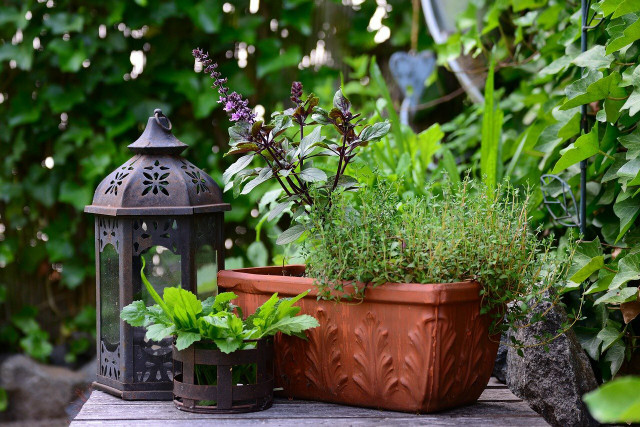


(Foto: CC0 / Pixabay / congerdesign)
One highly effective and visually appealing method to deter pests naturally is by strategically planting insect-repellent plants in your garden. These plants not only help keep unwanted insects at bay but also enhance the overall aesthetic of your outdoor space.
- Basil: As one of the top mosquito-repellent herbs, basil is both pet-safe and poisonous to mosquito larvae. This dual functionality makes it an excellent natural pesticide for your garden. Read The 12 Best Plants to Naturally Repel Mosquitoes for more help keeping these summer nuisances away.
- Rosemary: This aromatic herb not only repels mosquitoes but also deters other insects. Rosemary is a fragrant addition to your garden that keeps pests away. If someone you know has it in their garden, here’s how to propagate rosemary for your own use.
- Sage: Thriving in colder regions with less sunlight, sage is a non-toxic plant with pest-repelling properties that protect both you and your plants. Sage can grow up to four feet tall, making it a striking feature in your garden.
- Marigold: These vibrant flowers deter various plant-eating pests while adding a pop of color to your garden. To prevent pet access, plant marigolds in window boxes or flower pots on elevated surfaces. If growing marigolds indoors, ensure they receive at least six hours of direct sunlight daily.
- Lavender: Known for its calming scent, lavender is also an effective repellent against mosquitoes, flies and moths. It’s easy to learn how to care for lavender, and this low-maintenance plant is safe for pets.
- Lemongrass: Containing citronella, a natural insect repellent, lemongrass helps keep mosquitoes and other pests at bay.
- Mint: Growing mint not only adds flavor to your dishes but also repels ants, mosquitoes and flies. Mint is generally safe for pets, but plant it in a container to prevent it from taking over your garden.
- Catnip: A member of the mint family, catnip is highly effective at repelling mosquitoes, aphids and other insects. While it’s a favorite among cats, it’s also safe for dogs when grown in the garden — and it’s an excellent flower for bees!
- Chrysanthemums: These beautiful flowers contain pyrethrins, a natural insecticide and plant that repels insects, including ants, beetles and ticks.
- Alliums: Effective against aphids, slugs and other pests, alliums are a group of plants that include onions, wild garlic and chives.
Homemade Pesticides: DIY Garlic Pepper Spray
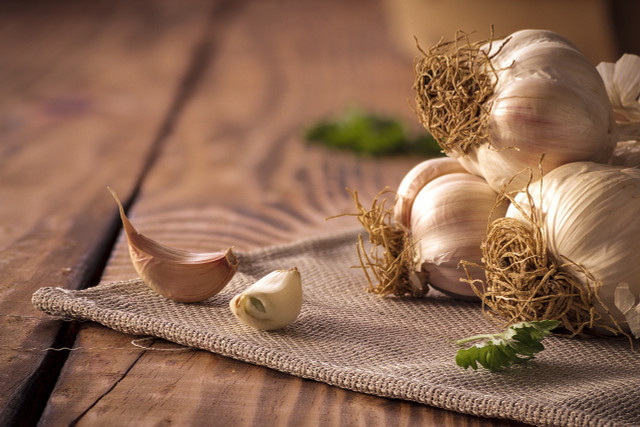


(Foto: CC0 / Pixabay / ozkadir_ibrahim)
This natural pesticide works well against aphids, ants, beetles, caterpillars, slugs and whiteflies in your garden.
How to Make Garlic Pepper Spray:
- Puree six garlic cloves and one medium onion.
- Combine the puree with five cups of water and four to five drops of dish soap. Add a little sprinkle of ground cayenne pepper for an extra kick.
- Strain it through a cheesecloth or a fine sieve to remove larger bits.
- Pour the mixture into a jar with a tight-fitting cover and let it sit overnight. The solution will keep for up to a week.
- Dissolve the solution in three glasses of water, and apply with a reusable spray bottle.
Make sure to spray the top and bottom of the leaves to ensure you coat bugs and eggs.
Chili Pepper Spray
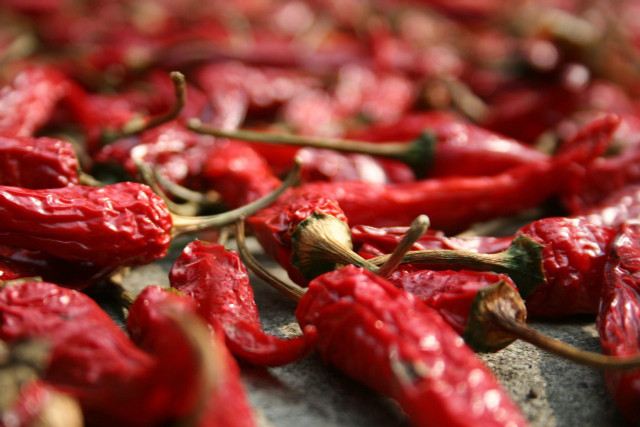


(Foto: CC0 / Pixabay / chrizzel_lu)
Like garlic spray, chili pepper spray is an easy-to-make natural pesticide and insect repellent. You can make it with fresh or dried hot peppers or with chile powder. The spicier, the better.
Caution: hot chili peppers can burn when they come into contact with your eyes — be careful! Keep your eyes, nose, and mouth protected when concocting this mixture. It’s wise to wear gloves and a mask.
How to Make Chili Pepper Spray:
- Mix one tablespoon of chile powder with four cups of water and a few drops of mild liquid detergent. Let it sit overnight.
- Spray as desired once the chili spray mixture has cooled.
How to Make This Organic Pesticide With Fresh Peppers:
- Mix 1/2 cup of fresh chili peppers with one cup of water.
- Add four cups more water and bring the mixture to a boil.
- Let it sit overnight, then apply it to your plants.
Spray the leaves of infected plants liberally. On windy days, avoid using this particular natural pesticide. You don’t want a cloud of pepper spray flying at your face.
There is no better time to use it than after sunset. Reapply every three to four days and after heavy rain. Spider mites and aphids can be eradicated with this solution.
Natural Pesticides: Vegetable Oil Spray



(Foto: CC0 / Pixabay / Mareefe)
A DIY pesticide made from vegetable oil and mild soap can be lethal to certain pesky insects, including aphids, beetles, whiteflies, thrips and mites. The soap and oil combo coats their bodies and suffocates them, obstructing their airways.
It’s straightforward to make.
How to Make Vegetable Oil Insecticide Spray:
- Combine one cup of vegetable oil and one tablespoon of soap. Cover and shake thoroughly.
- When ready to use, combine two teaspoons of the oil spray mix with four cups of water.
- Shake the bottle before every use, and spray the solution directly onto the infected plants.
Dish Soap Spray



(Foto: CC0 / Pixabay / artellliii72)
If you need to get rid of insects, you can use soap spray insecticides the same way as vegetable oil spray. Using soap as an insecticide is comparable to using oil as an insecticide since it may be used to reduce mites, aphids, whiteflies, beetles, and other tiny insects that are hungry for your plant’s precious nutrients.
All you need for this natural pesticide is basic liquid soap with no additional bleach or antibacterial components. Castile soap or milder hand soap can also be substituted in lieu of dish soap.
How to Make Dish Soap Insecticide Spray:
- Combine 1.5 tablespoons of mild liquid dish soap with four cups of water.
- Shake thoroughly.
- Spray the mixture directly onto the afflicted surfaces of plants.
Avoid applying this solution during the hottest part of the day; instead, do it at night or early in the morning.
Chrysanthemum Flower Tea
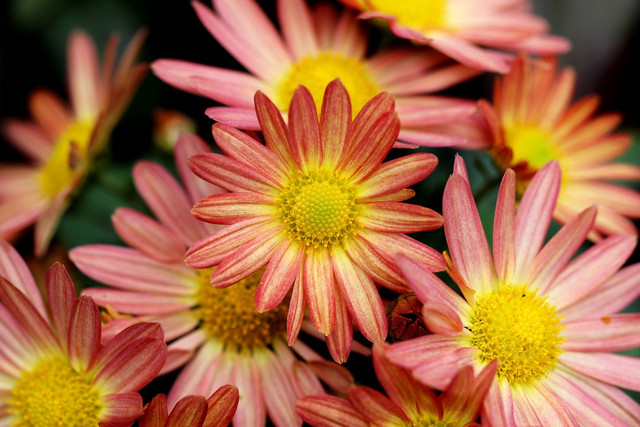


(Foto: CC0 / Pixabay / manseok_Kim)
Pyrethrum, a potent chemical component in plants, is found in chrysanthemum blossoms and may be an effective organic pesticide. It’s as simple as simmering dried chrysanthemum flowers in a pan of water for around 20 minutes. This potent mixture stays good for up to two months.
How to Make Chrysanthemum Tea for Natural Pest Control:
- Wearing gloves and a mask, use a blender or food processor to grind the heads of dried chrysanthemum flowers into a fine powder.
- Add four glasses of water for every 1/2 cup of dried flowers.
- Add a splash of soap to the mixture to bind the ingredients together.
- Bring to a boil and let the solution simmer for 5 to 10 minutes. Wait for it to cool.
- Once cooled, fill a spray bottle and spray on diseased leaves from top to bottom. If the infestation is severe, spray the stems too.
We recommend doing a test patch on a smaller section of the plant before spraying the full plant. We further recommend only spraying this mixture when temperatures are below 85°F. For optimal results, apply at nighttime. Repeat every week until the infestation goes away.
Precautions When Using Natural Pesticides
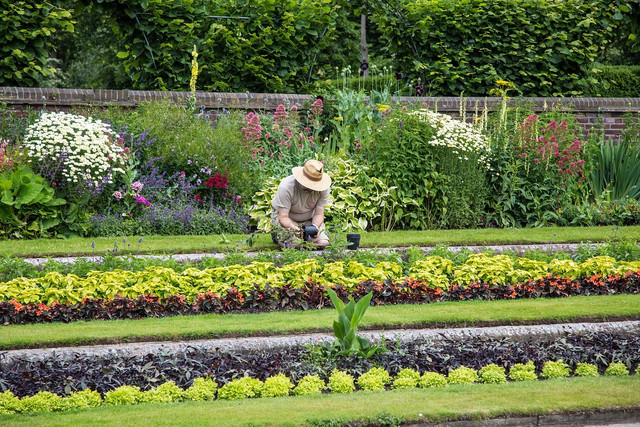


(Foto: CC0 / Pixabay / StockSnap)
Be sure to test any homemade natural insecticides on a tiny area of your desired plant first to ensure that it doesn’t hurt the plant. In addition, remember the following points:
- Be mindful of non-target species: While natural pesticides are generally less harmful than synthetic ones, they can still impact non-target organisms if not used responsibly. For example, broad-spectrum natural pesticides can harm beneficial insects like bees and butterflies. Use the least harmful methods first, and use targeted natural pesticides when necessary.
- Rotate your organic pesticides: Just like with chemical pesticides, pests can develop resistance to organic pesticides over time. To avoid this, rotate your natural pesticides or use a combination of methods to keep pests from adapting.
- Follow the directions: While natural insecticides are derived from nature, they can still pose risks if not used correctly. Always follow the instructions for use and apply the appropriate amounts. Overuse can harm plants, beneficial insects and the soil ecosystem.
- Understand pests’ lifecycles: Knowing the lifecycle of the pest you’re trying to control can significantly improve the effectiveness of your natural pesticide. Apply it at the most vulnerable stage of the pest’s life cycle for maximum impact.
- Ensure your plants are healthy: Healthy plants are more resistant to pests and diseases. Ensure your plants have the right nutrients, water and light levels to grow strong. Combining good plant care with the use of natural pesticides can make your pest control efforts much more effective.
- Consider potential allergies: Some people may be allergic to certain natural insecticides, just like they can be allergic to certain foods or plants. Use gloves when handling them, and wash your hands thoroughly after application.
- Keep out of reach of children and pets: While many natural pesticides are safer than their synthetic counterparts, they should still be stored safely and out of reach of children and pets. Even natural substances can be harmful if ingested or used improperly.
The Downsides of Natural Pesticide Use
While natural pesticides offer substantial benefits, they do come with some challenges and limitations:
The Need for More Frequent Application: Organic pesticides often require more frequent application due to their biodegradable nature. While this is advantageous for the environment, it can demand more time and effort from the user.
Possibility of Reduced Effectiveness: Depending on the pest and the conditions, natural insecticides and pesticides might sometimes be less effective than synthetic ones. However, carefully identifying the pest and using a suitable natural pesticide can improve outcomes.
Potential Negative Impacts on Non-target Organisms: Although safer for the environment, improper or excessive use of homemade pesticides could potentially harm non-target organisms, like beneficial insects. Thus, it’s crucial to apply natural pesticides responsibly as part of an integrated pest management approach.
Read more:
- Urban Gardening: 6 Creative Tips and Ideas for Small City Gardens
- 10 Plant Facts That Will Change How You Think About Nature
- 6 Rose Diseases and Pests and How to Treat Them
Do you like this post?







